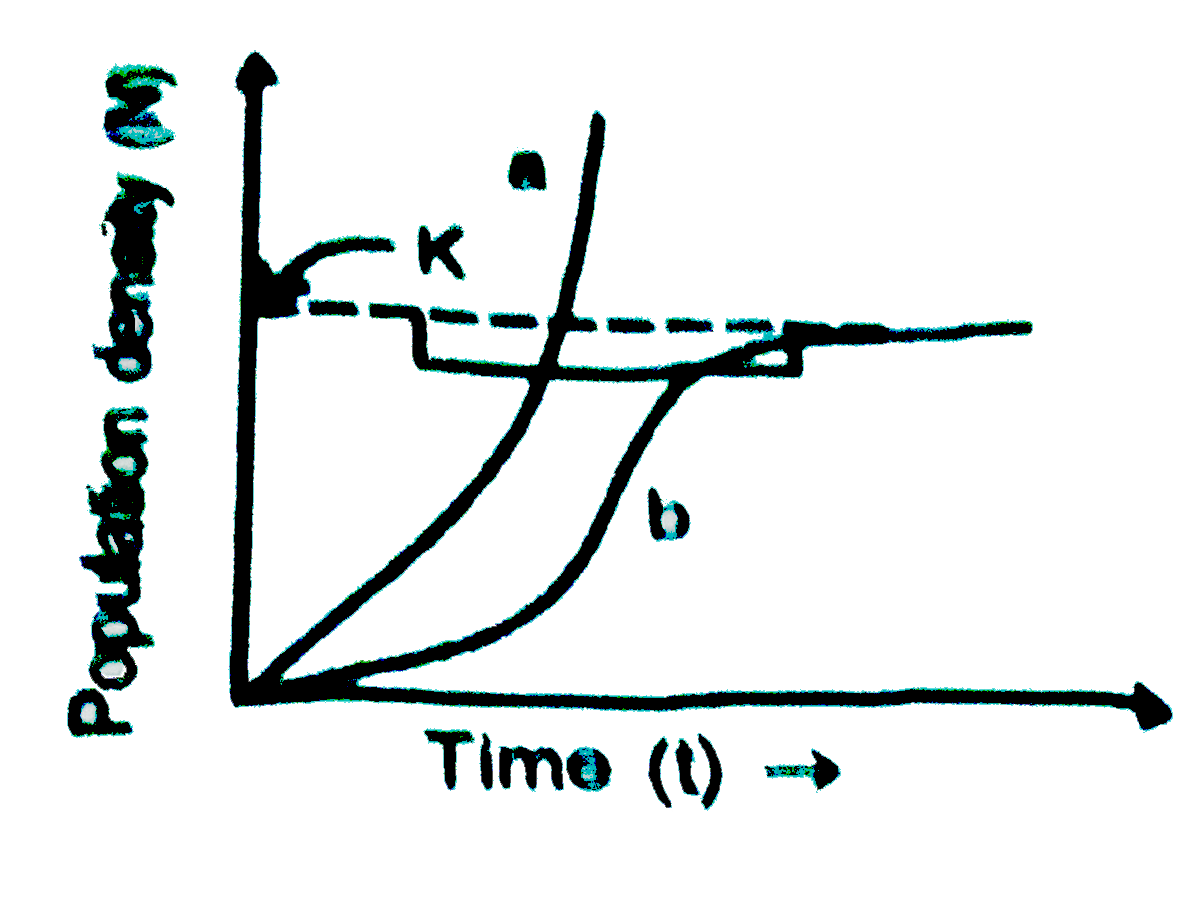What is 'r' in the population equation given : dN/dt = rN
'r' is called intrinsic rate of natural increase.
Topper's Solved these Questions
- XII BOARDSBOOK - XII BOARD PREVIOUS YEAR PAPER ENGLISHCHAPTER - XII BOARDSEXERCISE - SET- I
32 Videos
- XII BOARDSBOOK - XII BOARD PREVIOUS YEAR PAPER ENGLISHCHAPTER - XII BOARDSEXERCISE - Set-I
143 Videos
- XII BOARDSBOOK - XII BOARD PREVIOUS YEAR PAPER ENGLISHCHAPTER - XII BOARDSEXERCISE - SET-II
40 Videos
- SAMPLE PAPER 2019BOOK - XII BOARD PREVIOUS YEAR PAPER ENGLISHCHAPTER - SAMPLE PAPER 2019EXERCISE - Section E Part B
3 Videos
Similar Questions
In the equation,dN/dt=rN
View SolutionStudy the graph given below and answer the questions that follow :
(i) The curve 'b' is described by the following equation :
dNdt=rN{K−NK}
(ii) What does 'K' stand for in this equation ? Mention its significance.
(ii) Which one of the two curves is considered a more realistic one for most of the animal populations ?
(iii) Which curve would depict the population of a species of deer if there are no predators in the habitat ? Why is to so ?

View Solution
Knowledge Check
The population growth is generally described by the following equation : dNdt=rN(K−NK) What does 'r' represent in the given equation ?
APopulation density at time 't'BIntrinsic rate of natural increaseCCarrying capacityDThe base of natural logarithmThe formula of growth rate for population in a given time is
Adt/dN= rNBdt/rN = dNCrn/dN=dtDdN/dt=rN
What is a zero population growth rate?
View SolutionWhat does 'K' represent in the equation given below?
dNdt=rN(K−NK)
View SolutionWhat is population explosion?
View SolutionThe population growth is generally described by the following equation : dNdt=rN(K−NK) What does 'r' represent in the given equation ?
View SolutionFind odd one w.r.t population
View SolutiondNdt=rN(1−NK) What does the following notations represent ?
(i) dN/ dt (ii) r (iii) N (iv) K
View Solution
